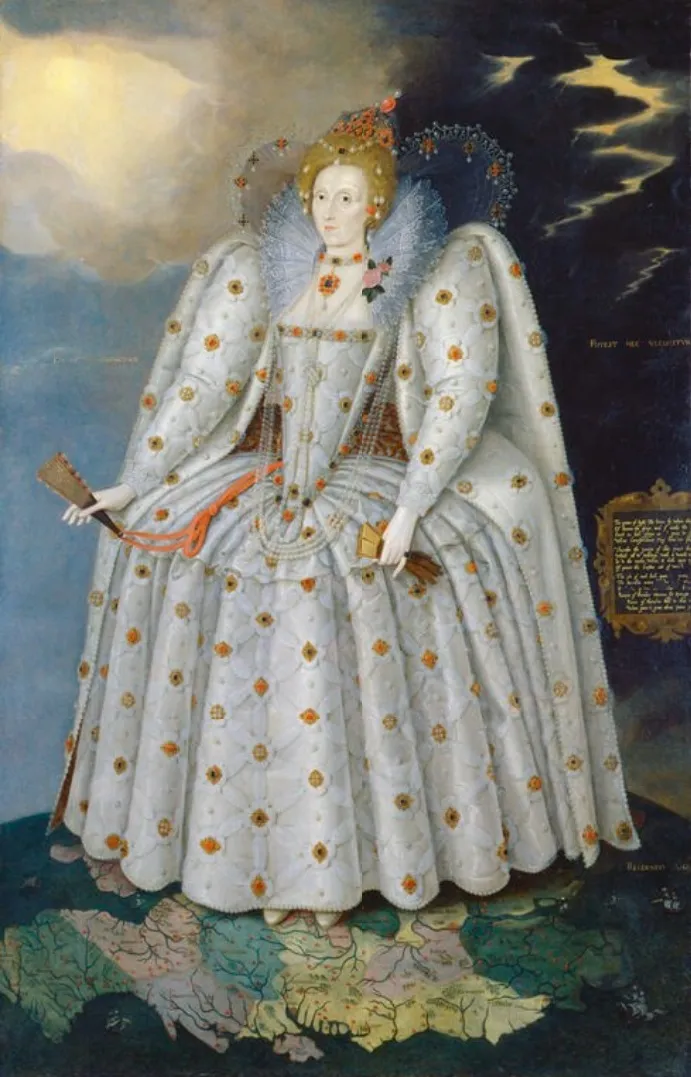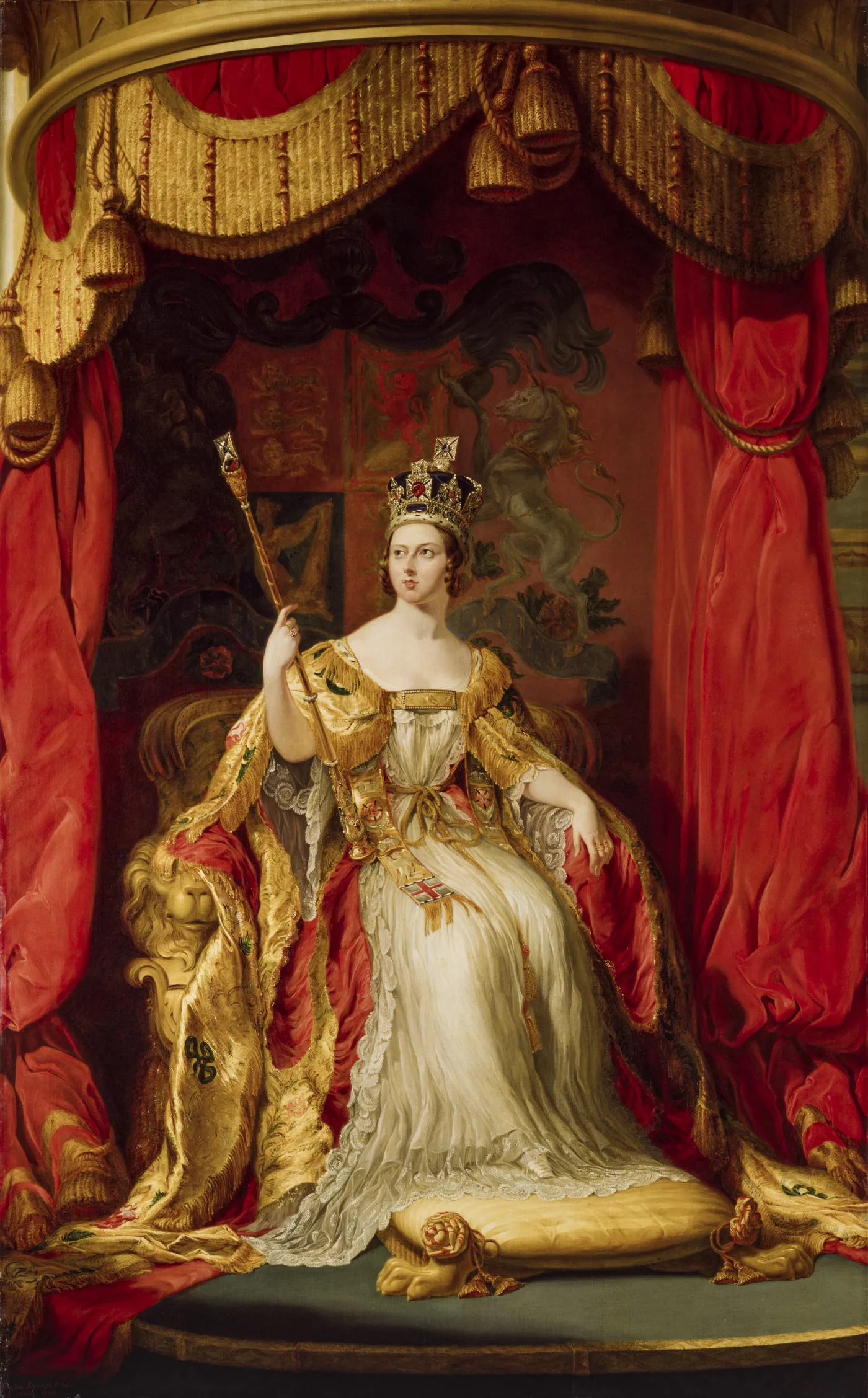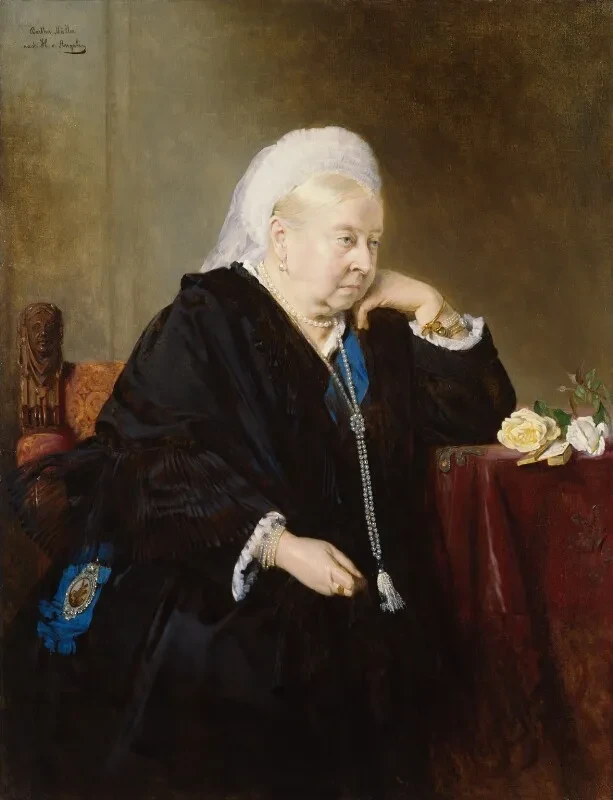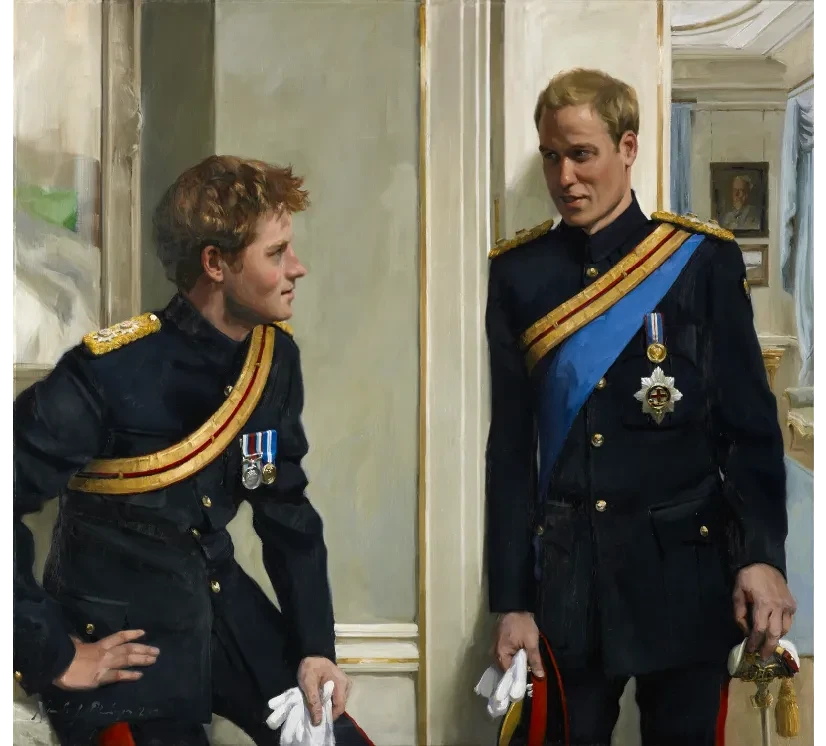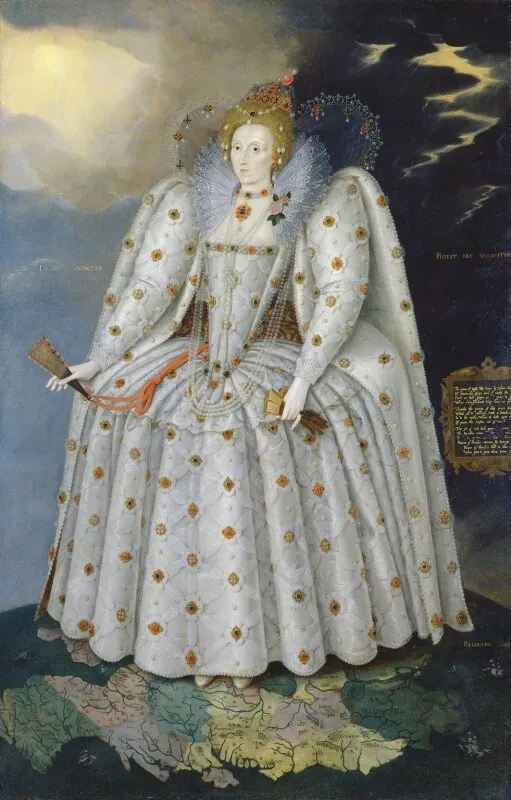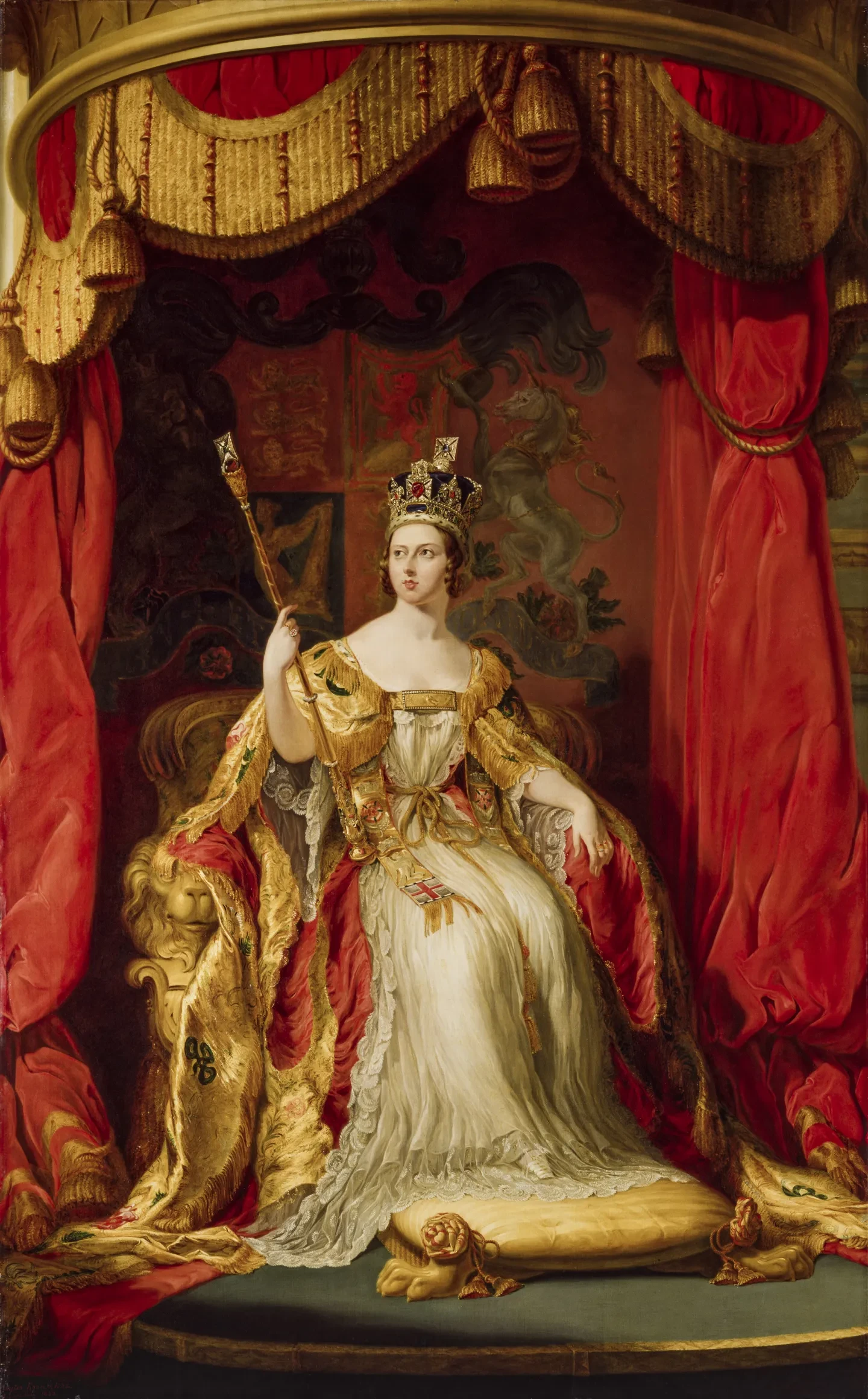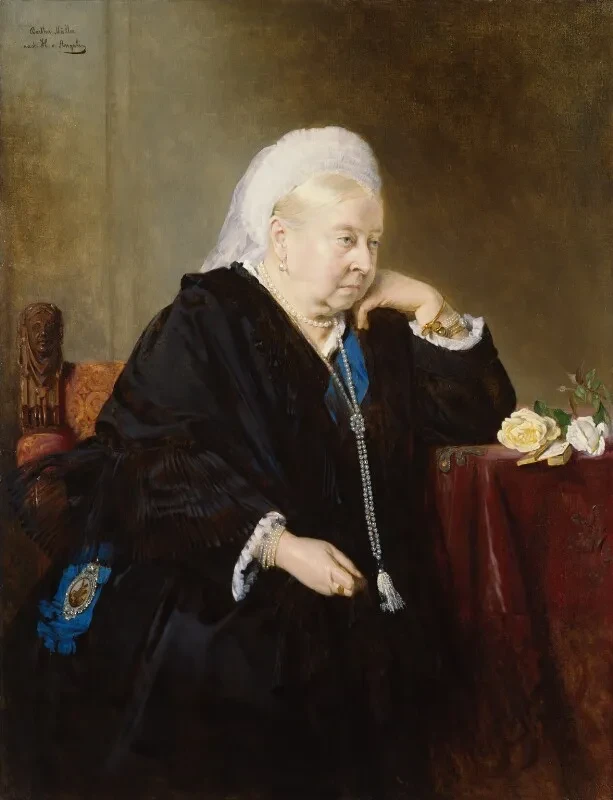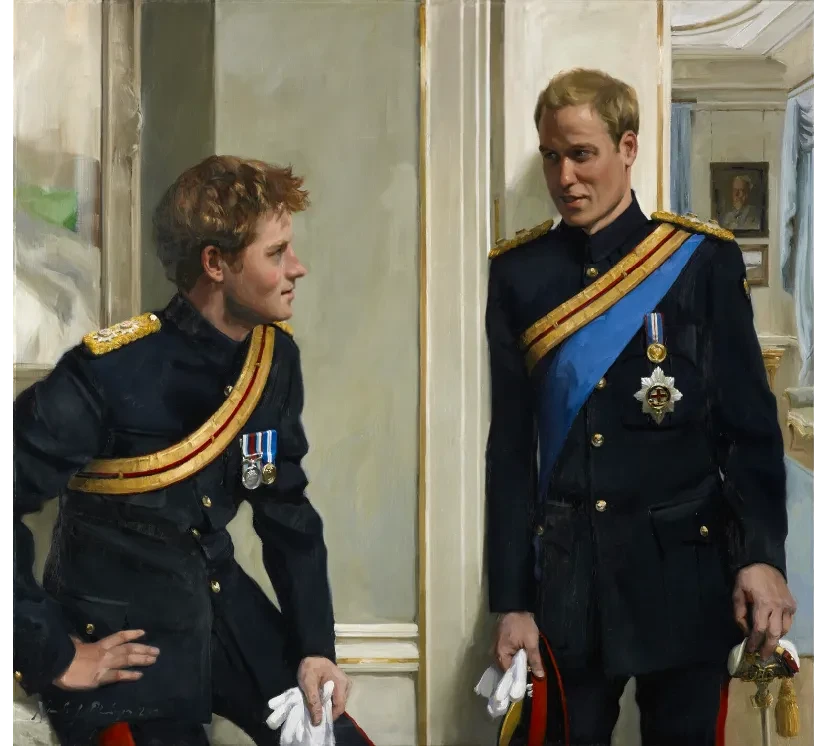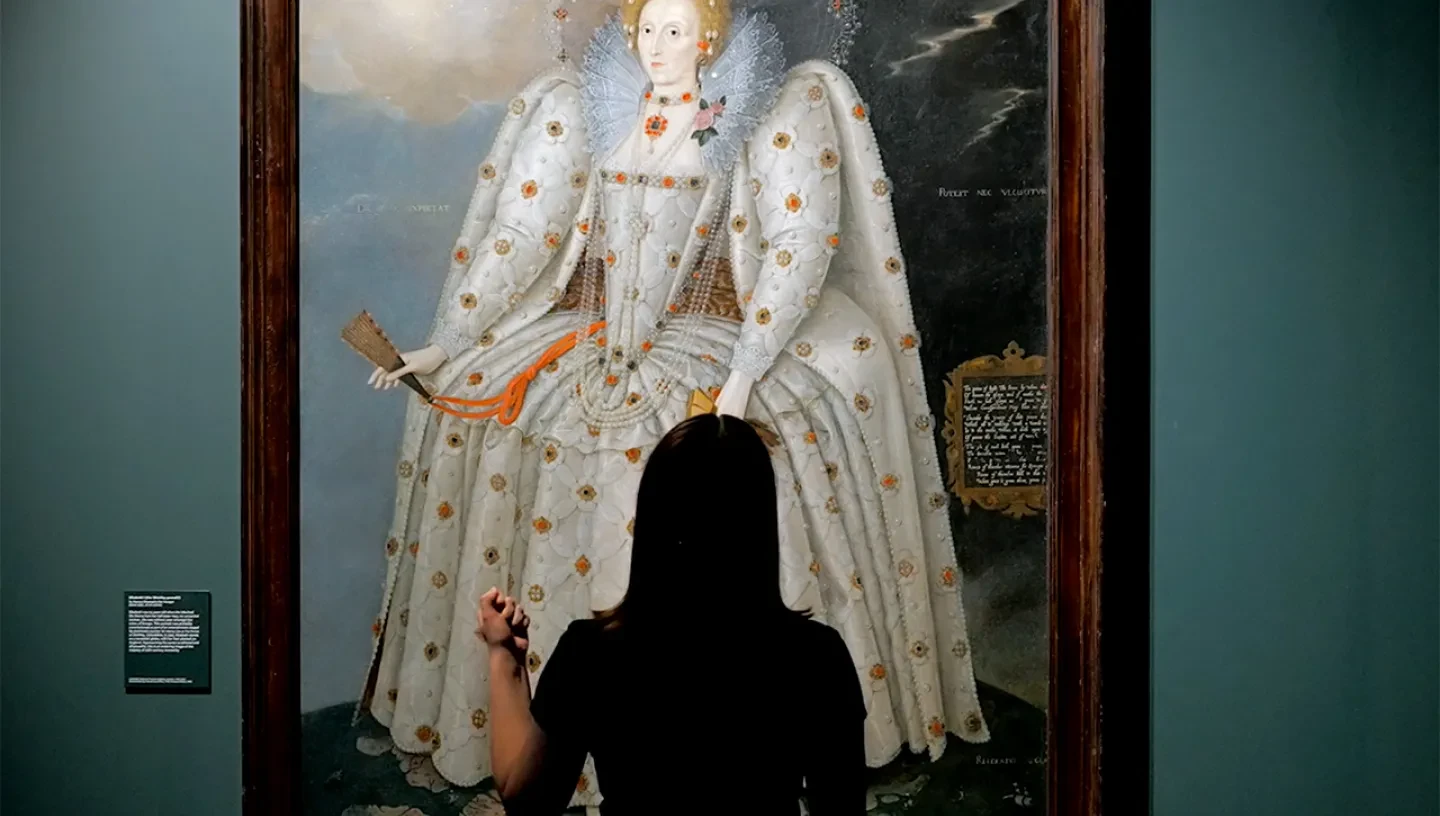
“Wow,” Athena Rose says as she gazes at the Ditchley portrait of Elizabeth I in Tudors to Windsors: British Royal Portraits.
Athena, along with Lakeisha Nibi and Courtney Major-Linihan, is a performing arts student at Lewisham College.
We asked the students to give their thoughts on key portraits in the exhibition. From royal duties and materialism to symbolism and brotherly love, here’s what they had to say...
The Ditchley portrait of Elizabeth I by Marcus Gheeraerts the Younger
Painted by Flemish artist, Marcus Gheeraerts the Younger in around 1592, the 'Ditchley portrait' of Elizabeth I depicts the Queen dressed in white, standing on the globe of the world.
“She looks like an angel in the sky. Her dress is covered in pearls and pearls are a symbol of virginity,” Lakeisha says.
For Athena, the portrait exudes majesty. “It screams dominance, power,” she says. She points out the contrasting weather at the top of the portrait, noting, “She can control anything around her. It could be sunny one day, but if she’s not having it, it can be rainy the next.”
Courtney agrees that the portrait showcases Elizabeth’s status. “It’s like she’s holding a wand, and when she strikes, everyone listens. When she says ‘go,’ everyone jumps,” she says.
Queen Victoria by Sir George Hayter, 1863, based on a work of 1838
This painting of Queen Victoria’s coronation shows the teenage queen in all her splendour and glory.
“The curtains at the side are like a theatre,” Lakeisha says. “They’ve just opened and she’s ready to perform, ready to give her best.”
Queen Victoria came to the throne in 1837 at the age of 18, which resonated with Lakeisha. “I’m 18 myself, and I could not imagine such responsibility, the weight that would have been on her shoulders,” she says.
Athena commented on the queen’s youthful energy: “She’s looking up to the distance as if looking towards the future; seeing what she can bring forward with her youthful attitude.”
Queen Victoria by Bertha Müller after Heinrich von Angeli
For Courtney, Bertha Müller’s portrait of Queen Victoria in mourning, painted nearly 40 years after Prince Albert’s death in 1861, is especially moving.
She explains: “I have a lot of sympathy for Queen Victoria in this picture. She’s a widow and for her, her husband was the most important thing in her life. And I think this is important for us as teenagers nowadays to realise that materialistic things don’t make you who you are, and the people around you do.”
Prince William, Duke of Cambridge and Prince Harry, Duke of Sussex by Nicky Philipps
This painting of Prince William, Duke of Cambridge and Prince Harry, Duke of Sussex was the first official oil portrait of the brothers. It was made by artist Nicky Philipps in 2009.
“It’s a very relaxed portrait, and they’ve even got their gloves off,” Lakeisha says. Athena agrees, noting that the portrait captures a “secret stolen moment” between the two siblings. “They don’t have to be the future king and the prince, they can just be... William and Harry,” she says.
